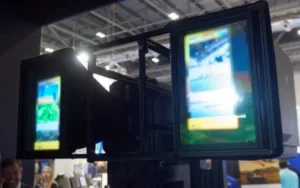At the back of the hall, one company, Dauntless, had set up its simulation system in an area that allowed two users to move around, wearing VR headsets. On the displays were the scenarios that were being played out and you could see how this kind of simulation could be very helpful in developing either a very specific scenario (for example, a hostage situation in a known building) or to develop close team cooperation and coordination.
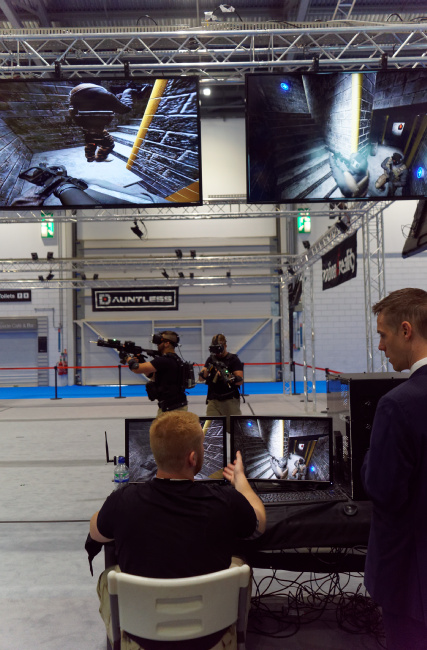
BAE Systems was showing a rudimentary Augmented Reality (AR) system based on 3D modelling and object recognition that it is developing for maintenance applications. The demonstration was showing the system indicating that a component was faulty and indicated how to undo the component using a spanner. The headset being used for the demo was an Epson Moverio.
Barco was at the show to promote its products, especially the F90 projector. However, there were no new announcements, although we were told that the flexible LED products that we have spotted, but have been unable to get info about at ISE, DSE & ProLight & Sound, will finally be officially released at Infocomm!
Digital Projection did not have any product news since we saw them at Laval Virtual a few weeks ago. At the ITEC show, the company was highlighting its 4K LED-based Insight projector in an optically blended configuration using the technology to create a 4K square image. The company told us that it is very happy with the colour performance of the projector which is proving popular in simulation. It is said to be ‘close to Rec 2020’, the red is just not quite on specification, apparently.
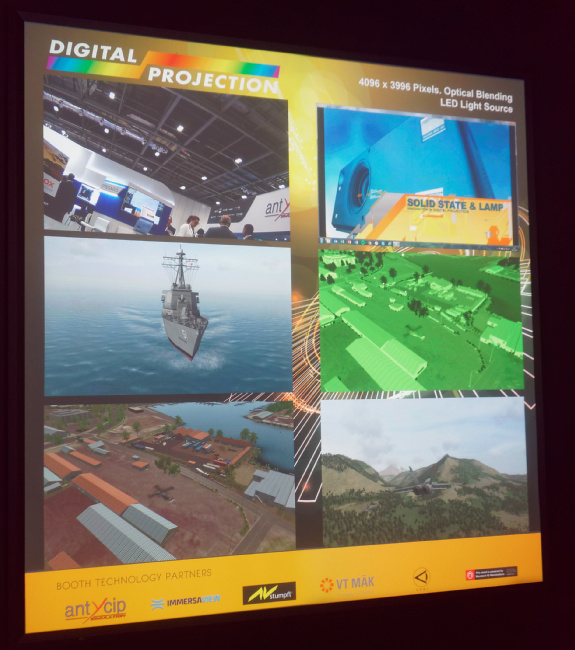
 Digital projection used these optical combiners to create a 4K x 4K image (above)
Digital projection used these optical combiners to create a 4K x 4K image (above)
We met with domeprojection.com at the Frankfurt Pro Light and Sound and it was showing similar “mini-systems” at ITEC. However, it also had a large multi-projector dome that uses dynamic image mapping. The demonstration was of a stereo projection system using active glasses. Of course, the image perspective for correct S3D has to be based on the viewing position of the user’s eye, so there is a tracking system that detects the users eye positions and then calculates the correct perspective images. These then need to be dynamically mapped onto the dome. The system can support almost any resolution, and the company has already built systems that use as many as 30 projectors. Reference sites for the company include the TiME immersive environment at the Fraunhofer HHI that we reported on last year just before IFA. (3IT7 And Onward to the TIME Machine…)
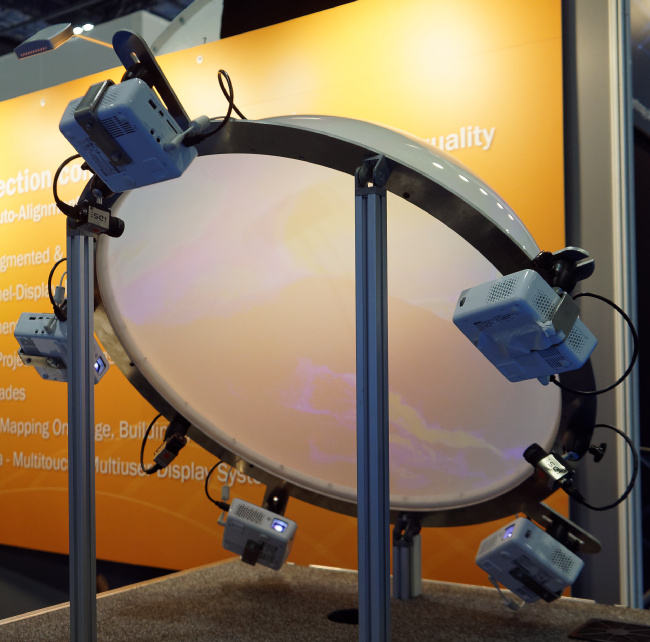
Epson is starting to make some marketing efforts in the defence world and had a small booth that was highlighting its UST projectors and its Moverio smart glasses (although the new Moverio 300 was not there). SmartBeam is a partner-developed mounting system for UST projectors that allows the image to be projected onto the floor. The system allows interaction using a pen for annotation (for example, for tactical planning), but not with finger touch.
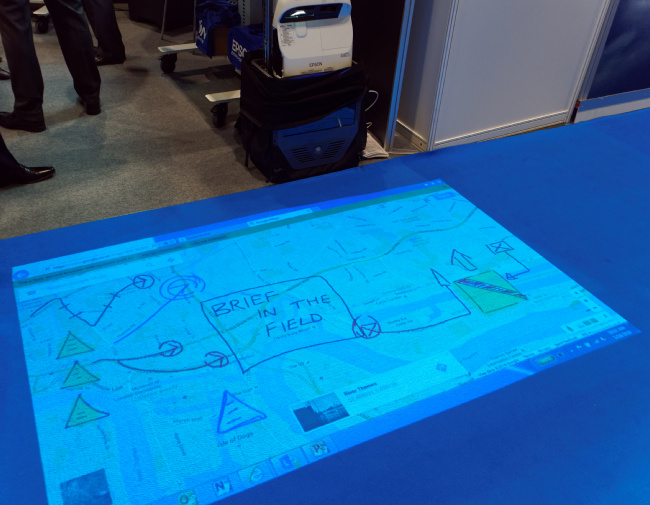
A young Lockheed Martin engineer started to show us a monitor that is used in the company’s re-configurable vehicle simulator. The system uses velcro to allow different USB-based control systems to be put around the display. However, a more senior colleague explained that the engineer was not authorised to talk to the press, so the discussion stopped. Nobody that was qualified was available, so the secrets of Lockheed Martin’s use of velcro will remain a mystery for now.
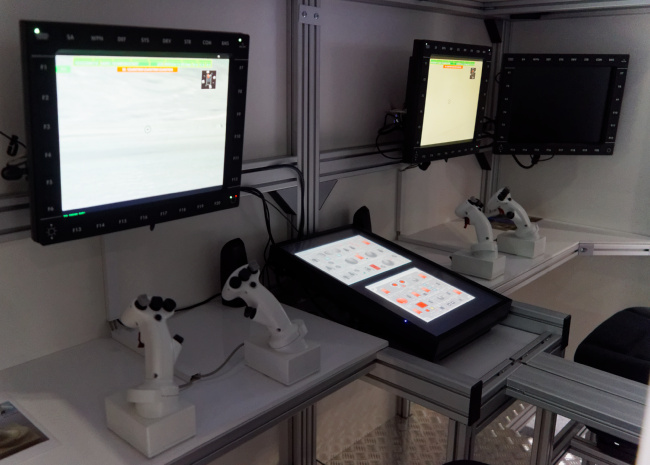 Lockheed Martin puts velcro-attached controls in this re-configurable vehicle simulator
Lockheed Martin puts velcro-attached controls in this re-configurable vehicle simulator
Panasonic was highlighting its ToughPads and ToughBooks as well as a new smartphone with an integrated scanner. Unlike previous scanners, which are typically in the end of devices, meaning that the scanner usually has to be tilted and putting stress on the wrist, the new one has an angled scanner port, so that the device can stay level. The new smartphone is smaller than the first one that the firm made, as the first one was made to support 9 foot (2.7m) drop tests and IP68 (one hour under water!) reliability. Panasonic found that few users needed such robust products.
The FZ-N1, which has a 4.7″ display, supports Android and will start to ship in June. You can find more details in our previous article Panasonic’s (Panasonic’s Tiny Tablets Are Smallest Toughpads Yet. The firm told us that the convertible CF-20 notebook has proved to be very popular as many of the apps that clients need to run were designed without touch support, and for this a keyboard is more useful than with a simple tablet.
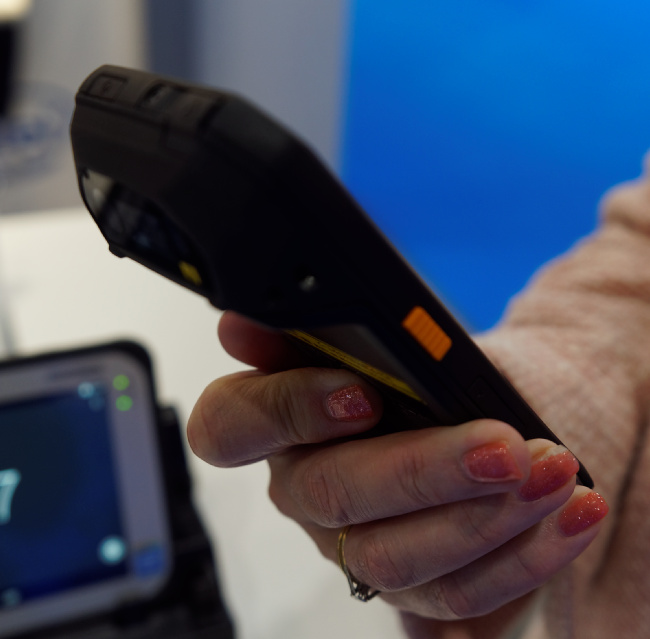
Rockwell Collins was showing its virtual world system, but we reported on that at I/ITSEC. At ITEC, the main new feature was the integration of sophisticated simulation systems (for example the image generator that is supplied to Lockheed F35 fighter aircraft customers for pilot training) with low end Joint Terminal Attack Controller (JTAC) controllers. At ITEC, the company was showing high end image generators working in sync with simple systems based on Alienware commercial PCs. The demonstration was using a Titan gaming engine, but any GPU or engine can be used.

